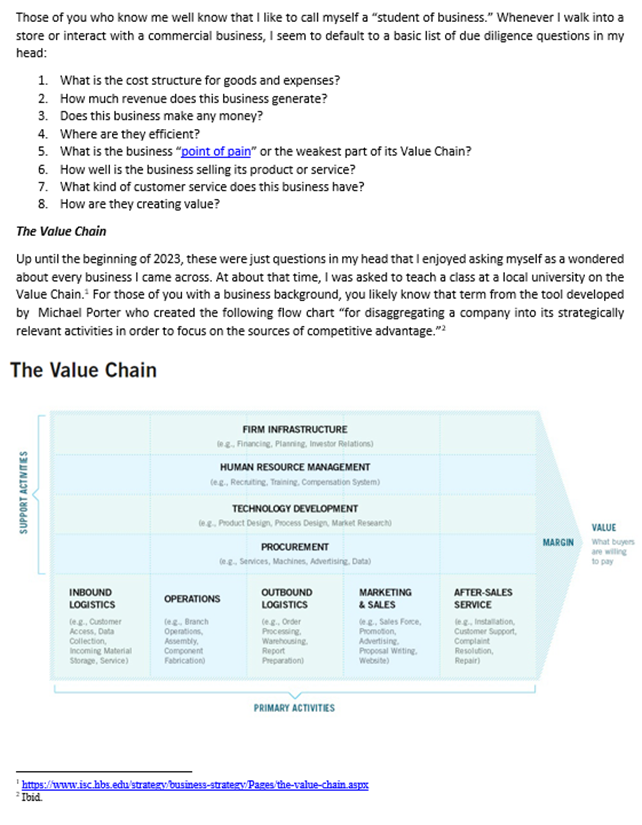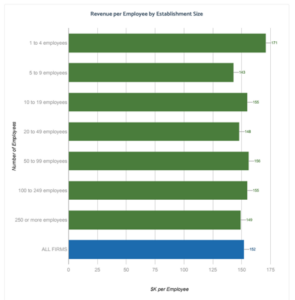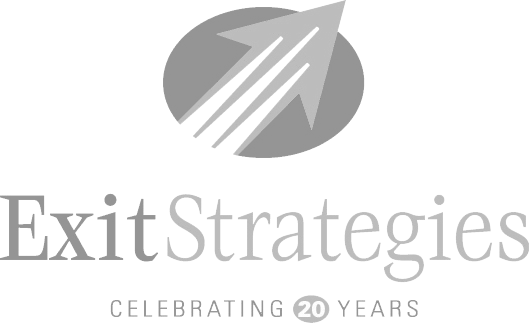If it’s a bad time to sell your business, consider growing instead. That’s the takeaway from one contractor whose plans to sell their business got squashed by inflation and supply chain issues in 2022.
Pre-pandemic the business had been doing about $50 million in sales with $6 million in EBITDA (earnings before interest, taxes, and depreciation). In most markets, that would have made this business a highly attractive acquisition target.
But problems started when the supply chain slowed down – and prices jumped. The lag time between when they signed a job and when they started it began to grow, while costs were also skyrocketing beyond all predictions. Suddenly their $6 million EBITDA had dropped to $2 million as they continued to deliver jobs as contracted.
At the end of the day, the owners were looking at a potential loss of $25+ million in projected business value, solely due to margin contraction and inflation they couldn’t control. Clearly it was no longer a good time to sell, and together we decided to pull their business off the market.
But the owners aren’t just sitting back and licking their wounds. They’ve modified future contracts to better cover the costs of inflation. Perhaps more significantly, they’ve switched from exit mode to acquisition mode and are actively seeking to buy strategic operations, including vertical integration to control their supply chain and pick up additional margin.
In just a few years – maybe as little as three – they’ll be ready to reenter the M&A market with even bigger margins and the higher multiples that go with it. Instead of $6 million EBITDA at an exit multiple of 6-7x EBITDA, the vision is to build a $10 million business that could, plausibly, sell at 8-10x EBITDA.
Takeaway 1: Exit strong
That old advice that you need to “grow or die” isn’t true for every business. Many business owners find their comfort zone and stay there for years before they sell. There’s nothing wrong with building a lifestyle business and keeping it at a size you can manage.
But the higher multiples come when you exit your business on a growth trend. Companies with a clear, actionable plan for growth can often command a premium price when they sell.
After all, when an investor buys an asset, they do it in hopes the asset will grow. That holds true whether the asset is stock, a collector car, real estate – or a business. The bigger the growth potential, often the bigger the purchase price.
Takeaway 2: Get out before you burnout
After retirement, the number two reason business owners sell is that they’re burned out. They’re worn out and frustrated – tired of dealing with employees, capacity, regulatory issues, you name it. Unfortunately, that means margins are often declining when they go to market. And, it means they don’t have the stamina to deal with unexpected blows like the above supply chain-inflation double whammy.
The business owners above had the foresight to sell while they still had gas in the tank. They didn’t have to take a $25 million haircut because they just didn’t have the energy to continue. Just the opposite, in fact! They’re ready to readjust and reinvest with a clear strategy to increase value and exit on a high note.
And because they were already working with an M&A advisory team, they’re better positioned to view their business through a buyer’s eyes. They know what areas of their business will drive value and the targeted improvements they need to make to not just grow revenue but to strategically build value for a planned sale.
Takeaway 3: Now may be the time to buy
In general, the M&A market is expected to rebalance in 2023. We’re coming off years of record high activity and premium valuations, at levels that couldn’t be sustained long-term. To be clear, business valuations are not expected to tank, but simply to return to (still favorable) 2017 to 2019 market conditions.
That said, fears of a recession are looming. Inflation, talent, and energy issues could create economic headwinds and some businesses will struggle. Some business owners, particularly those who are near burnout (see takeaway #2 above), may be willing to sell at a reasonable price.
Think about smaller competitors operating in your space or related markets. Chances are you already know a few businesses that, if acquired, would increase your top-line revenue and your margins.
The right acquisition could come with added benefits like increased capacity in a key area, access to new customer relationships, better control of supply chain, or cross-selling opportunities from strategic product lines. As employee recruitment continues to be a problem, an acquisition with an established workforce could be your smoothest, and most affordable, path to growth.
Talk to your advisors about market conditions and your ability to withstand future speedbumps. Make an informed decision on whether growing, getting out, or keeping the status quo is the right path for you.
For advice on exit planning or selling a business, contact Al Statz, CEO of Exit Strategies Group, Inc., at alstatz@exitstrategiesgroup.com. Exit Strategies Group is a partner in the Cornerstone International Alliance.














